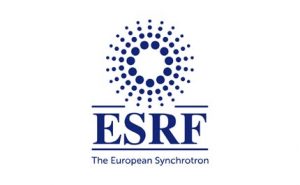-
video
The European XFEL: start of user operation
XFEL free-electron laser -
Observation of the transition to metal hydrogen
metal hydrogen high pressure insulator-metal phase transition -
video
Extended X-ray absorption fine structure (EXAFS) spectroscopy
xanes & exafs -
video
Small and wide angle X-ray scattering (SAXS & WAXS)
SAXS WAXS -
video
Tomwer: Cancelling task
tomography tomotools tomwer nabu task cancellation canvas -
video
X-ray fluorescence spectroscopy (XRF)
XRF -
Document
Integrator documentation
computation distribution azimuthal integration high-performance -
Document
Tomo-tools training
tomography -
Document
Nabu documentation
tomography reconstruction full-field phase contrast high-performance -
video
Powder X-ray diffraction phase identification with QualX2*
Powder Diffraction QualX2* -
video
Displaying ID21 XANES Spectra with PyMca
PyMca xanes -
video
Visualising fitted ID21 XRF maps with PyMca
PyMca X-ray fluorescence -
video
X-ray diffraction image calibration using PyFAI and Jupyter notebook
X-ray Diffraction pyFAI jupyter notebook -
video
Processing tomographic data with tomwer software Step 1 - Create the workflow
tomography tomwer -
video
"Processing tomographic data with tomwer software Step 4 - Reconstruct volume"
-
video
Processing tomographic data with tomwer software Step 2 - Run the workflow interaction hdf5
tomography tomwer -
video
"Processing tomographic data with tomwer software Step 3 - Run the workflow automated edf"
tomography tomwer -
video
Darfix: DFXM Data Analysis Tool
Darfix DFXM Dark-field X-ray microscopy -
video
PyMca ROI Imaging
PyMca -
video
Calibration of an X-ray diffraction set-up
pyFAI X-ray Diffraction azimuthal integration -
video
Tango Controls youtube channel
TANGO synchrotron control taurus pogo scada tango-controls -
video
Tango Kernel Webinar - cppTango Overview
TANGO tango-controls cpptango kernel -
video
Tango Kernel Webinar - Pogo
pogo TANGO tango-controls kernel code generator -
video
Tango Kernel Webinar - Tango event system
TANGO tango-controls Event System Tango Kernel Webinar -
video
Tango Kernel Webinar - PyTango
PyTango TANGO Tango Kernel Webinar -
video
Tango Kernel Webinar - Taurus - Part 1
taurus Tango Kernel Webinar -
video
Tango Kernel Webinar - Astor and Starter
tango-controls Starter and Astor Tango Kernel Webinar -
video
Tango Kernel Webinar - Taurus - Bonus during break
taurus Tango Kernel Webinar -
video
Sardana - Tango Configuration demo
TANGO tango-controls Sardana Configuration Demo Tango Kernel Webinar -
video
Tango Workshop at ICALEPCS 2021
TANGO tango-controls TangoBox conda debian ubuntu docker windows CentOS Tango Source Distribution …
Activity log

